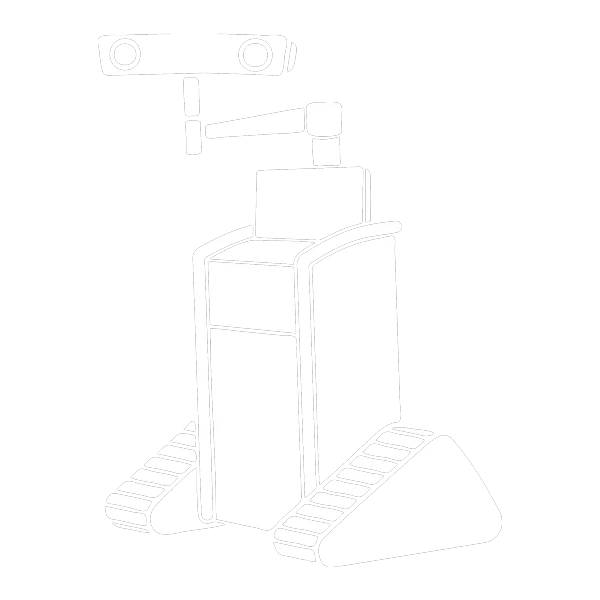Table of Contents
ToggleRJB – An Affordable Alternative to Bolt Navigation
In the field of spinal surgery, technology has continuously pushed the boundaries of what is possible, transforming the way surgeries are performed and improving patient outcomes. One such groundbreaking innovation is the Ruthless Spine RJB, an intraoperative surgical angle measurement tool designed to revolutionize spine surgery. In this blog, we’ll delve into how the RJB offers an affordable and efficient alternative to surgical navigation systems like bolt Navigation. We’ll explore the features, benefits, and the seamless workflow of the RJB.
Bolt Navigation
The Bolt Navigation System, developed by Bolt, takes advantage of the capabilities of an iPhone to offer real-time guidance for spinal screw planning and placement. This FDA-cleared technology relies on an iPhone’s positional guidance, eliminating the need for a reference frame. It works seamlessly with a patient’s diagnostic MRI or CT and a single C-arm shot after patient positioning. The system’s implant-agnostic design ensures compatibility with a variety of instruments, enhancing its versatility.
The Bolt Navigation System, equipped with an iPod touch boasting advanced technology such as the A10 fusion chip, an 8MP camera, and a sensitive gyroscope-on-chip, provides accurate and easy-to-use spine navigation. It reduces radiation exposure, saves time, simplifies procedures, and minimizes the presence of additional technical personnel in the operating room. Moreover, its implant-agnostic nature contributes to its widespread applicability across different implant systems.

Ruthless Spine RJB
Recognizing the challenges that spinal surgeons face, Ruthless Spine embarked on a journey to revolutionize the healthcare industry with the RJB. The RJB is an intraoperative surgical angle measurement tool that offers an inexpensive alternative to Bolt navigation while maintaining accuracy, simplicity, and efficiency.
Simplifying Surgical Angle Measurement with RJB
The RJB system is built on the principles of simplicity, efficiency, and accuracy. It consists of a compact Bluetooth-connected module that can be easily attached to surgical instruments provided with the RJB device. Unlike complex and expensive custom machinery, the RJB module requires only a brief 5-second pairing process with an Android or iOS tablet app.
Once connected via Bluetooth, the RJB module displays the axial and sagittal trajectory of the instrument shaft on the tablet screen, enabling pre-operative orientation. The module’s standout feature is its ability to maintain connectivity with the app even when the line of sight is blocked. This ensures continuous and reliable measurements throughout the procedure. Each single-use RJB module boasts an impressive battery life of up to 10 hours, providing ample time for surgeries.
Effortless Step Operation with RJB
Ruthless Spine’s RJB operates with remarkable simplicity, streamlining surgical processes for enhanced efficiency. Here’s a step-by-step breakdown of how RJB is operated:

Step 1: Turn the RJB On
Turn on the RJB device by removing and discarding the battery pull tab.
Step 2: Attach to Handle
Insert the RJB device into the handle slot. Follow the markings for device orientation. The slot should only allow the device to be inserted in one way.
Step 3: Connect to Tablet
Deploy the Ruthless RJB app on a tablet.
Step 4: Pair the RJB
When the app is opened, a tablet screen prompts to pair the RJB device. The RJB identifier can be scanned from the label or manually inputted.
Step 5: Select Instrument Type
After pairing the device, a prompt will appear to select the instrument type.
Step 6: View Needed App Functions
Once the instrument type is selected, the starting screen will appear. From here, the user can see the angle of the device, hold the angle, offset the angle, edit the instrument name, choose display precision, and watch tutorial videos. Hold and offset features are controlled via touchscreen buttons in the tablet app.
Step 7: Properly Orient Instrument
For use, the instrument should be oriented such that the face of the RJB (marked with ‘UP’ and ‘DOWN’ and visible through the front of the handle slot) is in a plane parallel with the plane of the operating table, without introducing rotation about the instrument shaft. During use, the instrument may be tilted in the axial and sagittal.
Step 8: Fluoroscopy-Guided Technique
When using the RJB, it is recommended that the surgeon follow standard fluoroscopy-guided technique, utilizing fluoroscopy as necessary to confirm pedicle screw trajectory intraoperatively. The RJB is a spatial tool and not a navigation system providing trajectory guidance.

Step 9: Bluetooth
If Bluetooth connection is lost (displayed angles disappear or freeze), restart app. If RJB device does not pair, turn on, or app does not restart, discard the device by disposing in accordance with facility protocol. Revert to standard fluoroscopy-guided technique to complete the procedure.
Step 10: Dispose the RJB
10. To terminate operation of the device, close the RJB app. Remove RJB from the instrument handle and dispose in accordance with facility protocol.
For the full instructions on using the RJB, refer to our ‘RJB User Guide’.
Choosing Between Bolt and RJB: Factors to Consider
When considering whether to opt for the Bolt Navigation System or Ruthless Spine’s RJB, several factors come into play. The differences lie in cost, complexity, and ease of use. Bolt offers accurate navigation with its iPod touch-based system, which is versatile and implant-agnostic. On the other hand, RJB offers simplicity and affordability without compromising on accuracy. Its Bluetooth-enabled module connects seamlessly with an app on an Android or iOS tablet, reducing the need for custom machinery and intricate procedures. The RJB module maintains connectivity even when obstructed from direct view, allowing for continuous measurements.
Conclusion
In the ever-evolving landscape of spinal surgery, innovation paves the way for improved patient care and surgeon satisfaction. Ruthless Spine’s RJB stands as a testament to this progress, providing an accessible and efficient alternative to established navigation systems like Bolt. By offering accurate angle measurements, streamlined procedures, and a cost-effective solution, RJB empowers surgeons to perform with confidence and efficiency. As healthcare continues to embrace technology, the RJB is set to reshape the world of spinal surgery, bringing forth a new era of precision and affordability.




